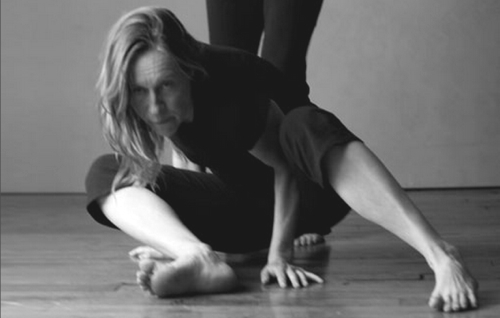
I suspect many actors have asked themselves “What on earth are my hands doing?” while on stage. For me, it was my toes; they would involuntarily curl when something felt not quite right. I was very aware that my physical body sometimes seemed to be totally at odds with what my intellect told it to do. It was as if I was acting inside my body rather with it.
Rather than ignore this (after all, it’s only my toes, 99.9% of the time no-one can see them) I decided to try to find out more about what part the physical body plays in an actor’s work. A UK workshop with renowned acting coach Brian Astbury sparked something in me. His book, Trusting the Actor released something in me, opened a window to a ‘technique’ that I was unfamiliar with, a technique of physical rather than cerebral work. Astbury suggested I read An Acrobat of the Heart: A Physical Approach to Acting by Stephen Wangh which broke that window wide open. A whole slew of questions rose up in me as I read. In pursuit of answers I found myself on a plane to New York to study with Wangh, author of An Acrobat of the Heart and pupil of Grotowski.
If I researched hard enough, discovered my intentions and motivations and attacked each script at a cerebral level, somehow, hopefully, my body would take care of itself.
I have never been remotely interested in physical theatre per se. I thought of physical work only in terms of keeping myself fit, and building stamina. So what possessed me to travel three and a half thousand miles to study physical theatre? I suppose it was a personal realisation that I expected my physical body to simply fall in behind my intellect. If I researched hard enough, discovered my intentions and motivations and attacked each script at a cerebral level, somehow, hopefully, my body would take care of itself. Grotwoski almost reverses this position; listen to the body and everything else will follow.
He developed a series of exercises, which he believed could assist an actor in creating emotion in a controlled circumstance, like a play, and keep the performance in the moment. It was an interesting proposition, certainly intriguing enough to make the journey to NYC to learn the Corporals and Plastiques that make up Grotowski’s work.
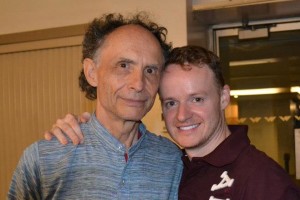 So, on a very sultry New York day in mid August, nineteen American actors and one Brit, me, assembled in the Red Bean Studio on West 37th, just a stone’s throw from Times Square and began a very sweaty course of study.
So, on a very sultry New York day in mid August, nineteen American actors and one Brit, me, assembled in the Red Bean Studio on West 37th, just a stone’s throw from Times Square and began a very sweaty course of study.
(picture left, Wangh with Josh)
I believe there are basic differences in American and British actor training. Essentially, Americans continue to study and ‘take class’ throughout their careers, a discipline that is only recently catching on over here. Consequently they study a much wider range of techniques across their working life. I would spend my lunch breaks in NY discussing the fascinating range of classes my American classmates had taken; Suzuki, Mary Overlie’s Viewpoints training, Per Brahe’s Mask work.
Just hours after starting I was complaining that everyone spoke like a self-help manual.
More fundamentally, however, there is a difference in approach, probably best summed up as the difference between Emotion and Intellect. Americans use emotion as their starting point, while British actor training places a lot of store by an intellectual approach. I think the best actors, British or American, marry these two harmoniously, but our starting points are essentially different.
For a semi-repressed Brit like me, coming to class prepared to discuss, or worse, experience emotion was hard. Just hours after starting I was complaining that everyone spoke like a self-help manual. I needed something concrete to hang my learning on, something less emotional. However, after a couple of grueling twelve hour sessions, I was more than content to hang up my intellectual pretensions and gasp out whatever came into my head.
Put simply, the Corporals are a torturous form of dynamic yoga. A progression of kicks, undulations and hip rotations make up the ‘Cat’, a form of Grotowski, while headstands, shoulder stands, handstands, forward rolls, and a tiger leap – a sort of running somersault make up the rest. The Plastiques are, basically, a set of joint rotations that encompass the whole body. We practiced these exercises for up to twelve hours a day until we were bruised, sweaty, and exhausted. Combined together in what is evocatively termed a ‘river’, the Corporals and Plastiques can be used to release emotion and imagery. After a ‘river’ I would feel light-headed, emotional and barely able to explain the images that I had experienced.
Grotowski’s work releases huge amounts of pent-up emotion, and the sessions were often tearful as well as sweaty. Throughout the process I felt cared for, and not just because we were attempting physically difficult moves, but also because the tutors, Wangh, Raina von Waldenburgh and Erica Fae, respected lecturers at Yale and NYU, cared deeply about us and about communicating the technique with a combination of reverence and humour.
For the first time I felt as if my body and my intellect were working together.
It is not merely physical though. Central to the work is deep listening – listening to your body, your brain, your environment. Less physically strenuous but far more emotionally draining exercises would focus on this deep listening and on allowing our bodies to react naturally to external and internal stimuli. When applying the techniques to text, the results were nothing short of revelatory. For the first time I felt as if my body and my intellect were working together. Coming from a technique which is mostly cerebral, where we make intellectual decisions based on text reading, it felt liberating to listen to and allow, my body to make choices.
But perhaps more liberating was the realisation that this journey, this career, can take me on adventures I might never have experienced before. In just a short time, I made lasting friendships and achieved physical feats I never believed possible. The course, and the people, and the city changed me – and I will never forget that. I learned so much about my body and my capabilities, but also about myself as an actor, and as a person.
An actor’s body is his way of physically demonstrating his emotion, it makes sense to me that I should feel comfortable in it. And more than that, it makes sense to me that I never stop learning – about my craft, and about myself.
More info on the NYC course
An Acrobat of the Heart by Stephen Wangh is available at Amazon
Trusting the Actor by Brian Astbury is available at Amazon
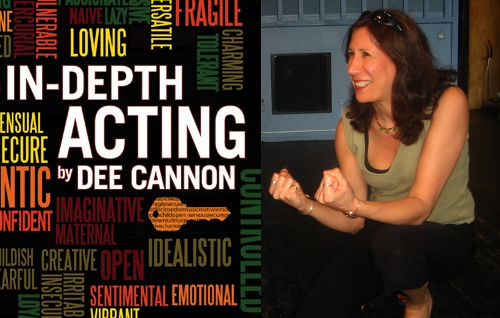
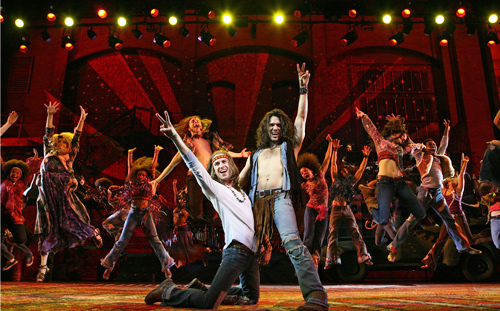
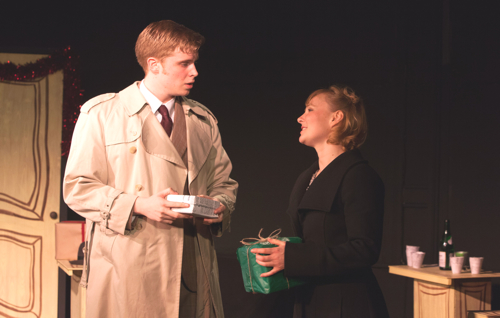
Be the first to comment